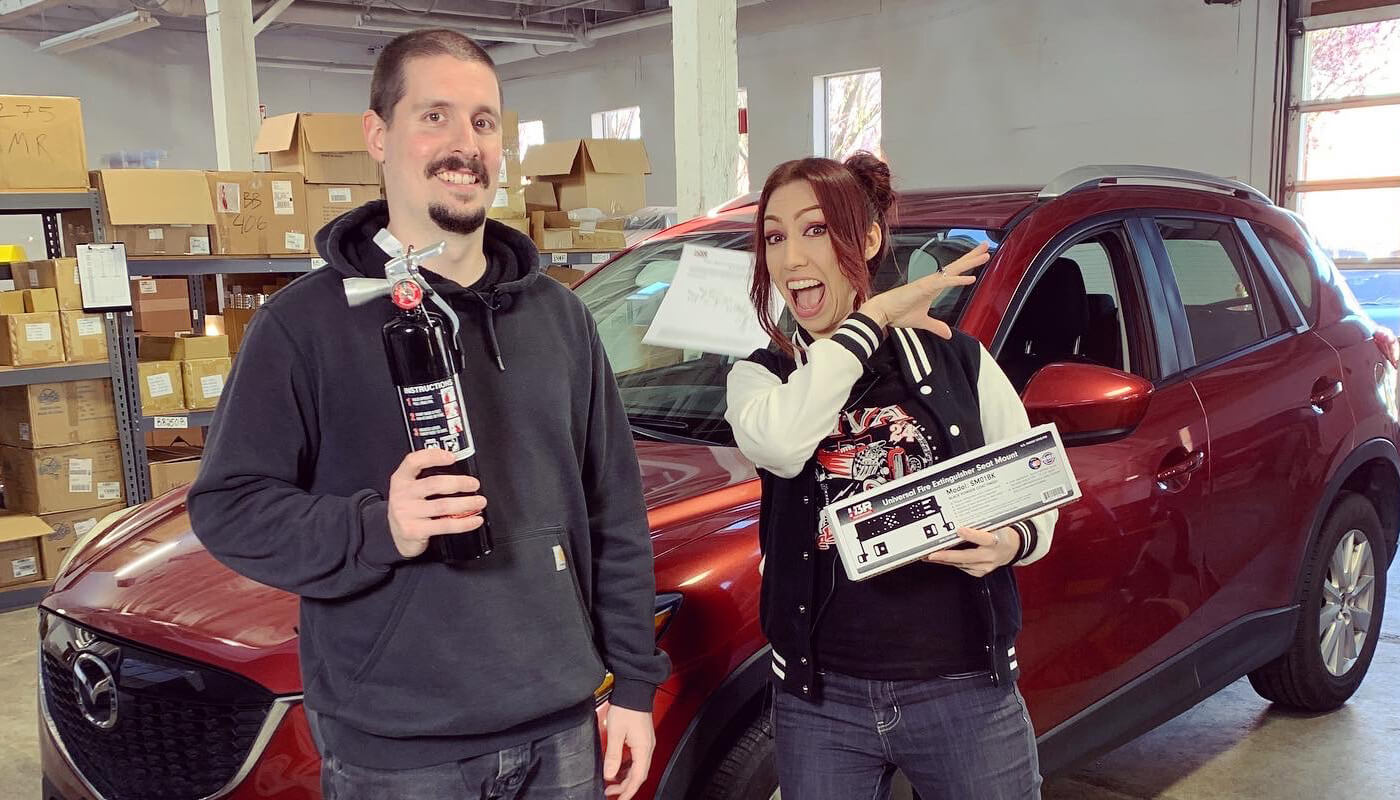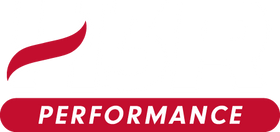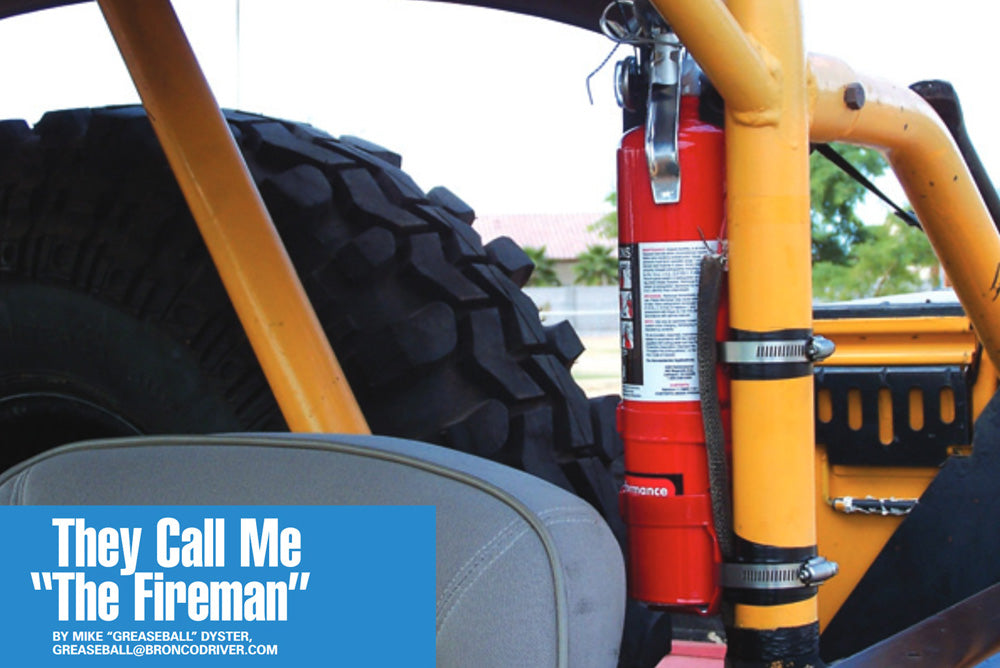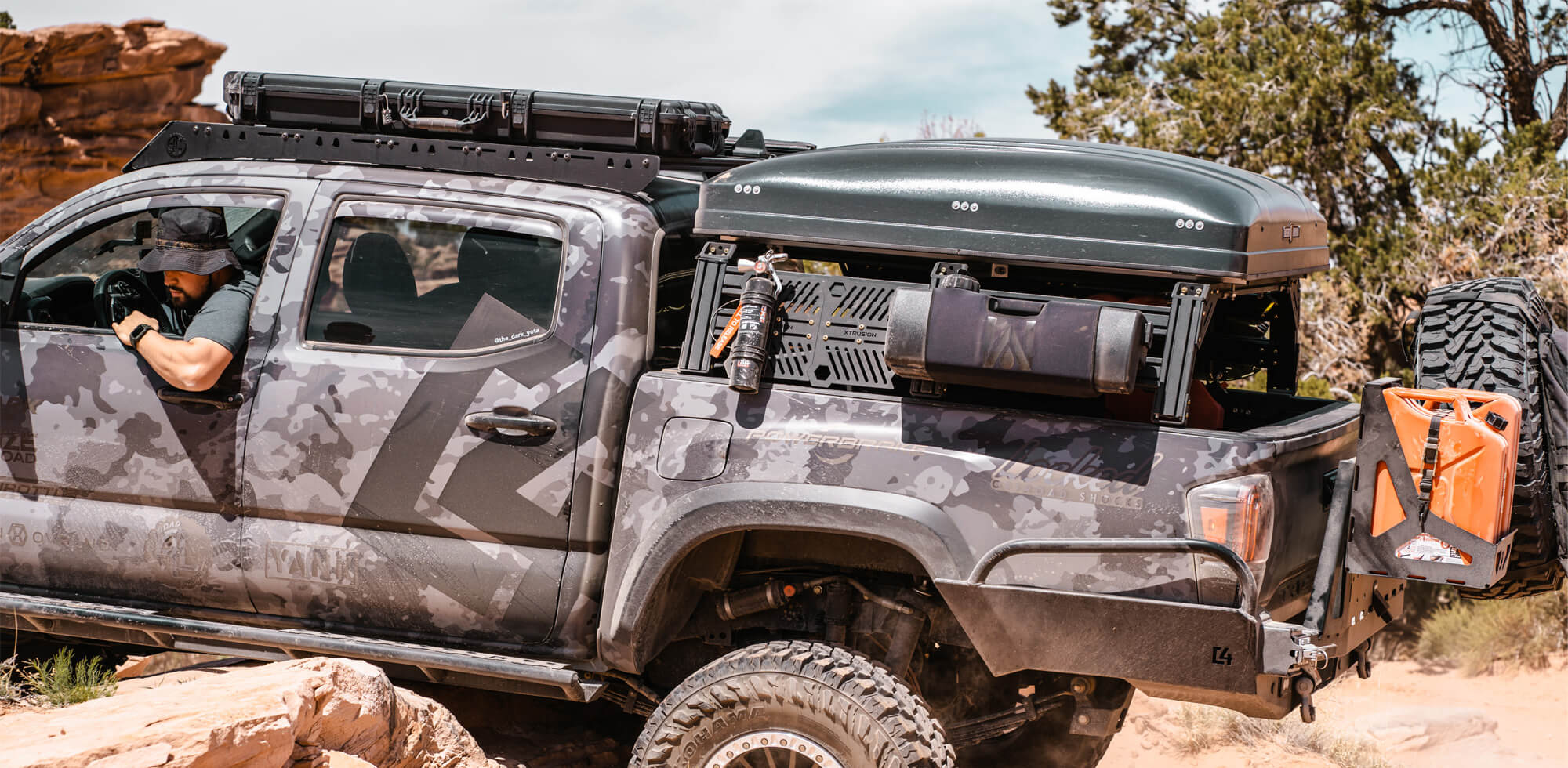Automotive Fire Extinguishers: What's The Big Deal?
Motor Age | Dec, 2007
LARKSPUR, CA - According the National Fire Protection Association (NFPA), U.S. public fire departments responded to an estimated 266,500 highway-type vehicle fires in 2004. These fires claimed 520 lives and caused $969 million in direct property damage. NFPA estimates that one of every six reported fires (17 percent) involves a highway-type vehicle and 13 percent of all civilian fire deaths. On average, more than 30 highway vehicle fires were reported per hour in 2004, and more than two-thirds of highway vehicle fires resulted from mechanical or electrical failures or malfunctions.
The NFPA data classifies highway vehicles as cars, trucks, motorcycles and other vehicles commonly driven on roads or highways.
These statistics, says H3R Performance, a manufacturer of automotive fire extinguishers, emphasize the point that automotive fire extinguishers are becoming an important topic in the aftermarket. In particular, sellers, distributors and service professionals should be educated on the safety standards most states have established when it comes to selling and purchasing automotive fire extinguishers, as well as telltale signs that a unit may not be in compliance. In addition, many consumers are not well informed about the dangers of a vehicle fire and how to choose a fire extinguisher - giving automotive professionals the chance to open a dialogue with customers and strengthen relationships.
H3R offers educational bulletins and selling information that examine the issues of selling unapproved fire extinguishers and what to consider when making a fire extinguisher purchasing decision. Here are just some of points the company offers to professionals and consumers alike:
* What are common causes of a vehicle fire?
Short circuits, leaking fluids and faulty fuel delivery systems are common causes of engine fires. Fires can also start in exhaust manifolds, catalytic converters and even brakes. Fires also often begin in garages where vehicles are stored and worked on and can quickly engulf a vehicle. Flammable liquids are common in garages and one spark from a cigarette or power tool is all that is needed for ignition.
* When choosing a fire extinguisher for a vehicle, what should the purchaser consider?
A fire extinguisher is an often forgotten "must have" for any car or truck owner. Here are some tips consumers should consider in choosing an extinguisher.
Primary considerations:
1. Effectiveness of the extinguisher in putting out the type and size of fire you might need to extinguish.
2. Storage space and weight limitations.
3. Acceptable levels of damage to your garage or vehicle (surface finishes, electrical system/machinery) and necessary clean up caused by the fire extinguishing agent.
4. Cost - both initial and potential.
5. Environmental concerns.
* What do the ratings on a fire extinguisher mean?
Underwriters Laboratories (UL) classifies and rates fire extinguishers on their ability to put out various types and sizes of fires. Class B:C extinguishers are most appropriate for automotive use.
| Class | Description |
| A | Wood, paper, cloth, etc. |
| B | Flammable liquids and gases |
| C | Live electrical equipment |
| D | Combustible metals |
| E | E Cooking oils and fats |
Using a given fire size as a benchmark, UL assigns a numerical rating before the letter classification to denote the size of a given type of fire that an extinguisher can put out. For example, a 10B:C fire extinguisher has twice the firefighting capacity against a flammable liquid and/or electrical fire as a 5B:C extinguisher.
Note: "C" class fire extinguishers do not have a numerical rating. The presence of the letter "C" simply indicates that the extinguishing agent is non-conductive.
* What are the differences between a dry chemical and a Halotron 1 fire extinguisher?
| Feature | Halotron 1 Clean Agent |
Dry Chemical |
| Effectiveness on B and C class fires by content weight. | Good (2.5 pounds achieves a 2BC rating). | Very good (2.5 pounds achieves a 1A:10BC rating). However, does not have the heat-seeking capability of Halotron. |
| Damage / necessary clean-up after use | None. Leaves no corrosive residue and doesn't damage surface finishes or electrical. | Damage to surface finishes and electrical from corrosive powder. Immediate clean up is necessary. |
| Environmental concerns | Low Global Warming Potential, low ozone depletion potential, short atmospheric lifetime. | No damage to ozone. |
| Overall Rating and Conclusions |
Halotron is an effective, environmentally responsible alternative to ozone-depleting agents that are no longer produced. | Dry Chemical extinguishers' inexpensive initial cost and effectiveness on easy-to-access B and C class fires are somewhat offset by the potential for messy and costly corrosive damage. |
* Where should a consumer install his or her fire extinguisher?
All fire extinguishers should be mounted in the vehicle to prevent rolling and potentially causing damage to the extinguisher or the interior of the vehicle. Plus, an unsecured fire extinguisher could cause injuries to the occupants of the vehicle. Each vehicle is different, so there is not one place to mount your fire extinguisher. However, here are some guidelines for consumers to follow:
1. The extinguisher should be visible and easy to reach. Mount the bracket on a strong, stable surface, sloping, vertical or horizontal position. The most common places to mount a fire extinguisher are in front of and behind the seat.
2. Do not mount it in an area, such as the engine compartment, where a fire can make it inaccessible; where the extinguisher will get a build-up of grease, oil or dirt; or where the extinguisher will be exposed to high temperatures.
3. Do not to use screws anywhere near the gas tank and be careful not to screw through an exterior body panel. After boring the holes into metal, consumers may want to apply an undercoating to protect against rust, and in the case of a trunk, to prevent water from seeping in.
|
READ ON |
|
Where can consumers get more information about fire extinguishers and extinguishing agents?
* California Fire Marshall Bulletins |
For a person to lawfully market, distribute or sell a fire extinguisher in California, the extinguisher must:
1. Comply with the requirements in the National Fire Protection Association's NFPA 10.
2. Have been examined by and bear the label of Underwriters' Laboratories Inc. (UL) or another testing laboratory approved by the state fire marshal as qualified to test fire extinguishers. (Cal. Health & Safety Code, sections 13160-13161).
Many other states contain similar prohibitions on the sale of non-compliant fire extinguishers. A good place to start an investigation on your local and state regulations is your local fire department.
* What is NFPA 10?
The National Fire Protection Association's "Standard for Portable Fire Extinguishers," NFPA10, specifies minimum requirements that must be met for a fire extinguisher to be considered safe. The requirements in NFPA 10 acquire the force of law in states by virtue of adoption or reference in states' statutes, regulations or through references in building and fire codes that are the law in those states.
* What liability issues does a retailer/distributor have in distributing illegal fire extinguishers?
Every product seller faces product liability exposure for the sale of an unreasonably dangerous product. This legal theory is called "strict tort liability," and responsibility is placed on a product seller even though the seller is not negligent. The responsibility is based upon the product's condition at the time the retailer makes the sale (i.e, the extinguisher's design, suitability for its intended use, adequacy of testing, instructions, warnings, presence of any production defects, express and implied warranties, etc.).
Although a retailer may be drawn into product litigation, in many cases the retailer is entitled to recover its losses (excluding its attorneys' fees) from the person in the commercial chain who created the defect. This is most often the manufacturer who exercises control over the extinguisher's design, production, testing and marketing. The question to ask is, "Will the manufacturer be financially able to reimburse the retailer for these costs?"
An extinguisher's price is not the only factor for a retailer to consider. The retailer has a genuine financial interest in whether the extinguisher is legal to sell, as well as the extinguisher manufacturer's quality assurance programs, design and production competence, level of its own insurance coverage, financial strength, business integrity and the performance and reliability of its units. The quality of the manufacturer and its extinguisher do matter. Lack of quality will translate into costs, perhaps very substantial costs, for the retailer.
An overseas manufacturer presents additional concerns discussed in the next section. If the manufacturer is beyond the reach of the U.S. courts, the retailer becomes the main target defendant in the event of a loss. The retailer is forced to defend an extinguisher it did not design, manufacture, test, prepare warnings and instructions for, all without the ready assistance of the unit's manufacturer. And like the plaintiff, the retailer cannot bring an overseas manufacturer into the case, to shoulder the defense burden and costs, due to the jurisdictional limits.
* Who is responsible for a product recall?
A fire extinguisher is viewed by the U.S. Consumer Product Safety Commission ("CPSC") as a consumer product, and thus fire extinguishers are subject to the product recall requirements in the Consumer Product Protection Act, 15 USC 2051 et seq.
The Act imposes recall responsibility on the manufacturer and any seller of a consumer product with a defect that creates a substantial product hazard. (15 USC 2064).
If the manufacturer of an extinguisher is insolvent, bankrupt, out of business, under-insured or beyond U.S. jurisdiction, it is the retailer who may be called on by the CPSC to conduct the recall, compensate the customers, replace the product and pay the associated costs.
* What does "UL Listed" mean in relation to fire extinguishers?
The reputation of Underwriters' Laboratories Inc. for testing for the public safety is renowned. On a dry chemical extinguisher, the UL Mark is a positive representation to the consumer that the extinguisher meets or exceeds the requirements of the NFPA 10, ANSI/UL 711 and ANSI/UL 299 safety standards discussed previously.
For the retailer, it is a valuable independent third-party validation of an extinguisher's compliance with these requirements that by law must be met in order for the retailer to lawfully sell the extinguisher in most states.
UL does more than allow a manufacturer to display the UL Mark on a fire extinguisher. An integral part of this authorization is a continuous process of scrutiny by UL of the manufacturer's manufacturing and quality assurance processes by regular on-site, in-plant inspections of the manufacturing facilities, QC controls and recordkeeping.





